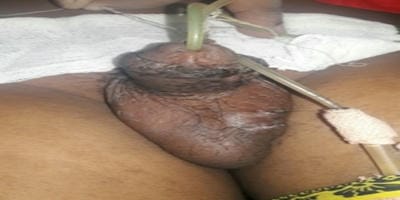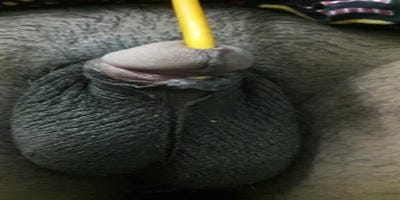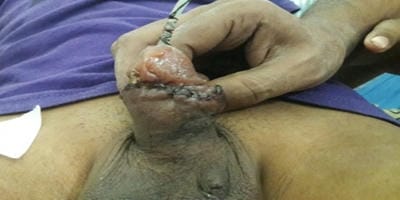Tunica vaginalis flap – is it a better surgical choice for urethro-cutaneous fistula following circumcision?
Maity K.1, Kumar Pal D.2*
DOI: https://doi.org/10.17511/ijmrr.2020.i02.03
1 Krishnendu Maity, Department of Urology, IPGMER and SSKM Hospital, Kolkata, West Bengal, India.
2* Dilip Kumar Pal, Department of Urology, IPGMER and SSKM Hospital, Kolkata, West Bengal, India.
Objective: To study the effectiveness of tunica vaginalis flap in repair of post circumcision urethro- cutaneous fistula. Materials and Methods: The current study reviewed all patients having surgical repair of post-circumcision urethrocutaneous fistula from December 2014 to April 2019 at our institution. Results: Ten cases presenting at age 5 to 22 years were operated. Most [60%] of the circumcisions were performed by a doctor at peripheral hospitals and others were done by traditional circumcisers. All cases had a single fistula and the size was more than 5mm in all cases. Three-layered fistula closure was done in all cases using the tunica vaginalis flap as the second layer for closure. There was no recurrence in any case. Conclusion: Use of Tunica vaginalis flap for repair of post circumcision urethro-cutaneous fistula is a highly effective technique regardless of size and site of the fistula. It is a simple procedure without any postoperative complications and without any recurrence.
Keywords: Circumcision, Complication, Repair, Tunica-vaginalis flap, Urethrocutaneous fistula
| Corresponding Author | How to Cite this Article | To Browse |
|---|---|---|
| , , Department of Urology, IPGMER and SSKM Hospital, Kolkata, West Bengal, India. Email: |
Maity K, Pal DK. Tunica vaginalis flap – is it a better surgical choice for urethro-cutaneous fistula following circumcision?. Int J Med Res Rev. 2020;8(2):154-158. Available From https://ijmrr.medresearch.in/index.php/ijmrr/article/view/1141 |


 ©
© 

